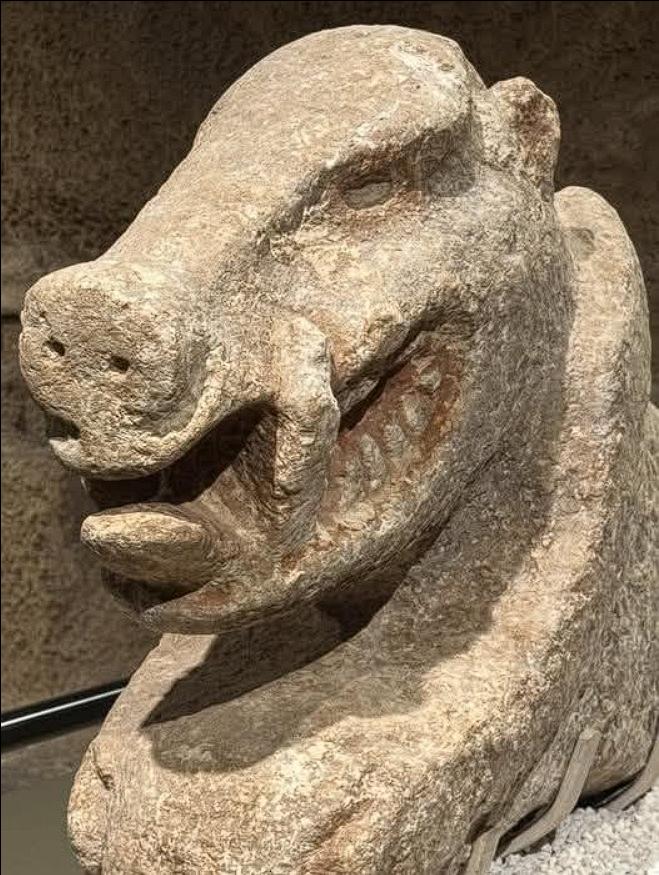A Painted Boar from the Dawn of Civilization
High on a dusty hill in southeastern Turkey, where stone circles whisper of ancient rites and forgotten gods, archaeologists made a discovery that reframed our vision of the Neolithic world. Among the enigmatic pillars of Göbekli Tepe, they unearthed a life-size statue of a wild boar — dating back to a staggering 8700–8200 BC.
But it wasn’t just the statue’s size or craftsmanship that stunned researchers. It was the color.
Traces of a Lost Palette
Time had not erased everything. Flecks of red pigment still clung to the boar’s tongue, while ghostly remnants of white and black painted its body. This was not merely a carved beast — it was a painted sculpture, carefully and vividly adorned.
Such traces suggest a reality far removed from the grey, weathered stones we associate with ancient monuments. These sculptures once pulsed with life, each stroke of pigment transforming stone into spectacle. What we now see as cold relics were, in their prime, part of a vibrant visual world—designed to awe, to provoke, and perhaps to summon the divine.
Rethinking Neolithic Ritual Art
The painted wild boar is more than a remarkable artifact — it’s a window into the sensory experiences of a culture more than 10,000 years old. At Göbekli Tepe, where towering T-shaped pillars are etched with foxes, snakes, and birds, this statue adds a new dimension: color. It suggests that ritual here was not only spiritual, but theatrical.
The people who built Göbekli Tepe may have gathered not just to worship, but to witness. The red tongue of the boar, the contrast of black and white across its muscular frame — all would have stood out beneath flickering firelight or the glow of the sun, transforming ritual into drama.
A New Chapter in Prehistoric Understanding
For decades, scholars viewed Neolithic sculpture as primarily symbolic — stark and silent. But this discovery introduces a forgotten layer of emotion and intention. It tells us that the world’s first temple-builders were not just carvers of stone, but painters of meaning.
The wild boar of Göbekli Tepe is no longer just a symbol of prehistoric might — it is a messenger from the past, whispering in color, reminding us that even in humanity’s earliest chapters, there was already a desire to dazzle, to decorate, and to breathe life into the eternal.

CÁC TIN KHÁC
Mary Walton: The Forgotten Inventor Who Helped Clean Up America’s Cities
Tomb of Queen Nefertari in the Valley of the Queens, Egypt
Discover the Hypostyle Hall of the Temple of Hathor at Dendera
Venus de Losange: Unveiling the Mystery of a 20,000-Year-Old Paleolithic Icon